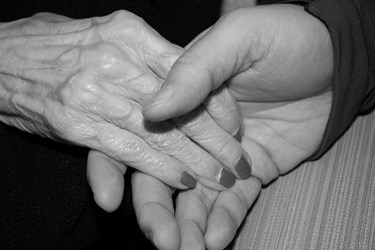Skin Test Could Lead To Earlier Alzheimer's, Parkinson's Diagnoses

Scientists have isolated a biomarker in the skin that could potentially help diagnose neurodegenerative diseases such as Parkinson’s and Alzheimer’s. Since the biomarker can be found in a skin biopsy rather than a more invasive brain biopsy, the test could shed additional light on the diseases and lead to an earlier pathological diagnosis.
Post-mortem studies of brains of Parkinson’s and Alzheimer’s disease patients have shown elevated levels of the abnormal proteins tau and alpha-synuclein. Because brain and skin tissue share the same embryological origin, researchers experimented to see if these biomarkers also appeared at elevated levels in the patients’ skin.
A research team from the Central Hospital at the University of San Luis Potosi in Mexico presented their findings at the American Academy of Neurology (AAN) Conference in Washington, D.C., reports an AAN press release.
The team ran a small clinical study of 65 patients, 20 of whom had been diagnosed with Alzheimer’s, 16 with Parkinson’s, and 17 with dementia caused by other conditions. Skin samples from these patients were tested against samples from 12 healthy people of similar age.
Researchers found that patients with Alzheimer’s and Parkinson’s had levels of the tau protein that were seven times higher than healthy patients or patients with dementia from alternate causes. Levels of the alpha-synuclein protein were eight times higher in Parkinson’s patients.
“Until now, pathological confirmation was not possible without a brain biopsy, so these diseases often go unrecognized until after the disease has progressed,” said Ildefonso Rodriquez-Leyva, the study author, in the press release.
Because a skin test is both simpler and cheaper than current clinical standards, researchers feel they might be able to offer a test that could diagnose the diseases much earlier. Furthermore, said Rodriquez-Leyva, the biomarkers could aid neurological research searching for causes and treatments for the diseases.
“More research is needed to confirm these results, but the findings are exciting because we could potentially begin to use skin biopsies from living patients to study and learn more about these diseases,” Rodriquez-Leyva told the BBC.
Though there is currently no cure for Alzheimer’s, early intervention can slow the progression of symptoms and improve quality of life. Research has focused on early and less invasive diagnostic methods. Some believe a breath test might be possible, and a team of scientists from Cedars-Sinai are developing a retinal scan to diagnose the disease.
Currently, Alzheimer’s Disease affects approximately 5 million Americans, and a recent AAN study estimates that Alzheimer’s is responsible for over 500,000 deaths each year, third behind cancer and heart disease as the leading cause of death.
The Washington Post reported that these numbers are expected to triple by 2050 and increase healthcare costs by approximately $1.2 trillion.
